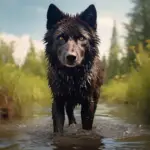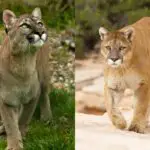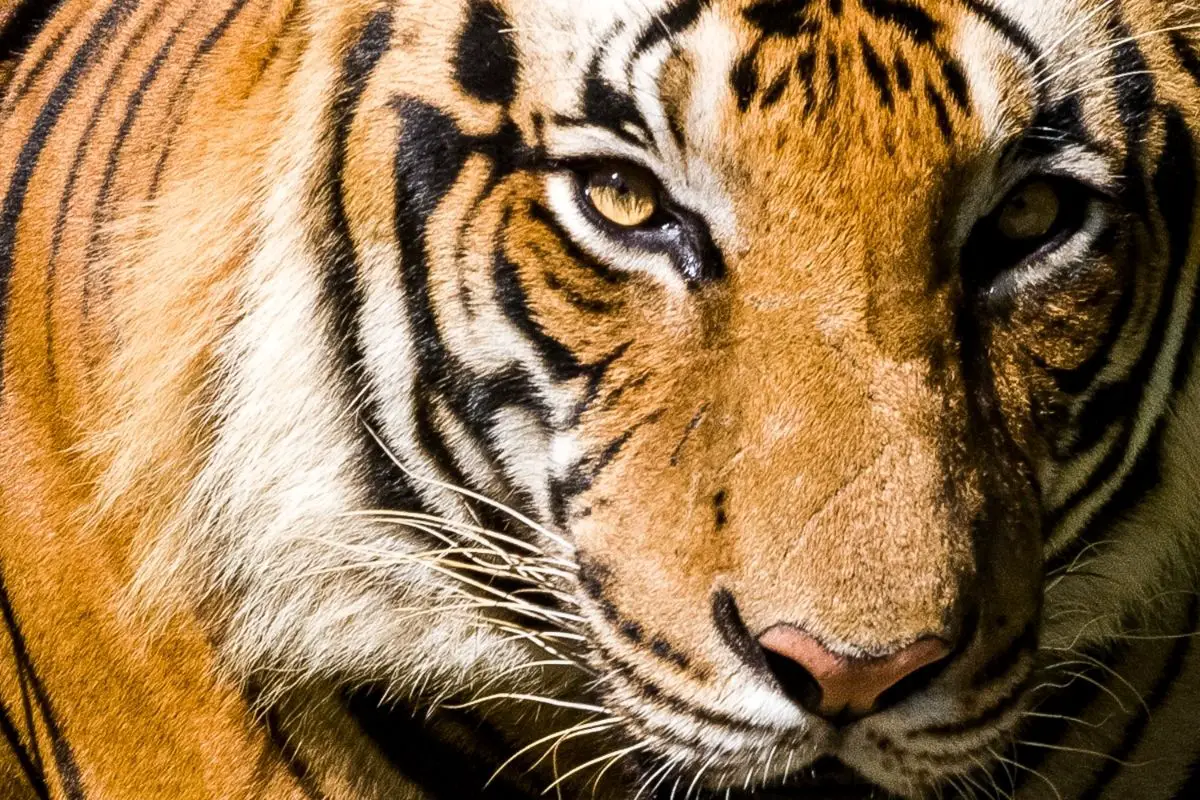What are the main differences between a wolf and a mountain lion? There are many!
The biggest difference between them is that wolves and canids, while mountain lions, or pumas, are felids.
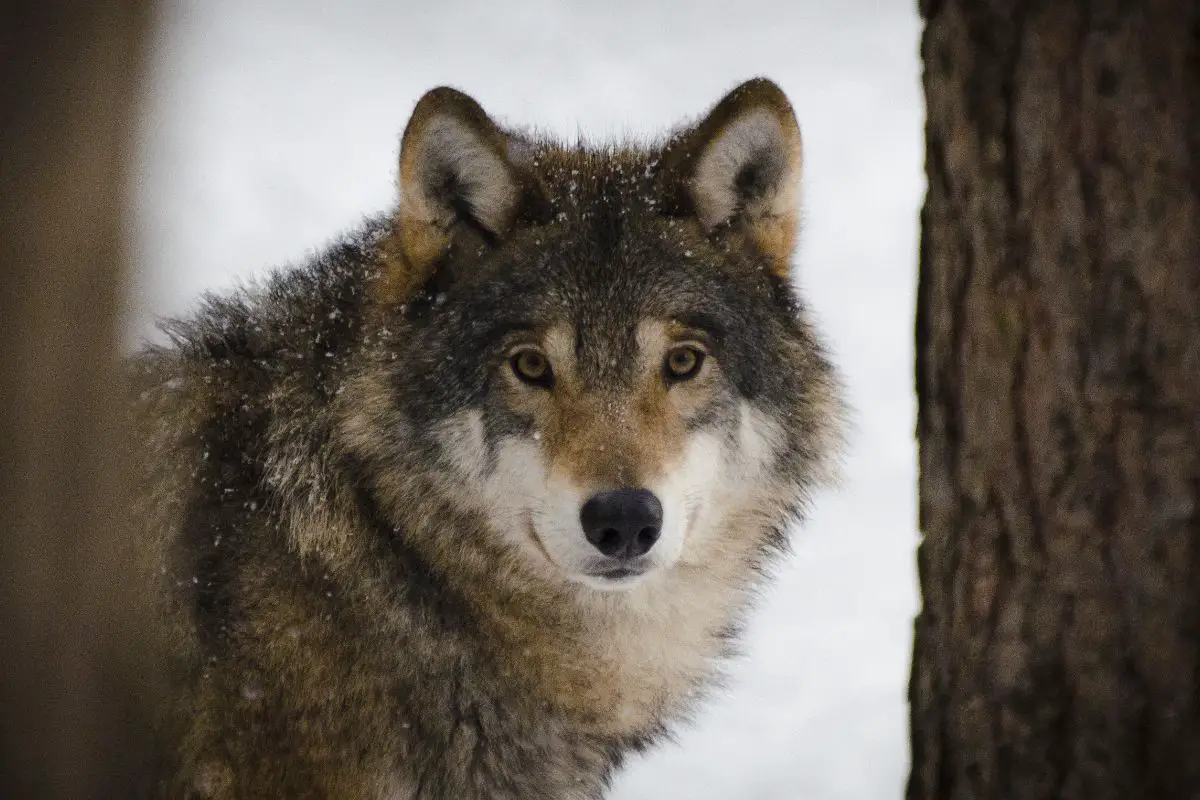
In other words, wolves are dogs, and mountain lions are cats!
The wolf is one of the most notable animals in the world.
There are many subspecies of wolves – almost 40! These include animals like the timber wolf, Eurasian wolf, Indian wolf, Greenland wolf, Arctic wolf, and so many more.
The appearances, behaviors, and other factors are likely to vary across all these subspecies.
However, for the sake of this article, we will primarily be focusing on the gray wolf – the most famous and widespread of the wolves.
As for the mountain lion, while there are several subspecies, there are few differences between them.
In this article, we will be referring to the mountain lion by a number of its other names, such as puma and cougar.
As the term “panther” is often used to describe melanistic jaguars and leopards, we will not be using this term when describing cougars throughout this piece.
If you want to find out more about all the differences between wolves and pumas, just keep reading.
We’re going to go through everything you could possibly want to know about them in the sections below.
Wolf Vs Mountain Lion: The Main Differences
Classification
Wolf
- Also Known As: varies depending on subspecies
- Average Lifespan In The Wild: 8-14 years
- Scientific Name: Canis Lupus
- Genus: Canis
- Family: Canidae
- Order: Carnivora
- Class: Mammalia
- Kingdom: Animalia
- Phylum: Chordata
- Height: 30 inches at the shoulder
- Weight: 88-175 lbs
- Length: 6.6 feet
- Conservation Status: varies depending on subspecies, typically endangered
- Number Of Subspecies: almost 40
Mountain Lion
- Also Known As: mountain lion, puma, cougar, panther, catamount, red tiger, deer tiger, painter
- Average Lifespan In The Wild: 10-13 years
- Scientific Name: puma concolor
- Genus: Puma
- Family: Felidae
- Order: Carnivora
- Class: Mammalia
- Kingdom: Animalia
- Phylum: Chordata
- Height: 2-3 feet at the shoulder
- Weight: 64-220 lbs
- Length: 3.25-5.25 feet (head and body); 23.5-33.5 inches (tail)
- Conservation Status: varies depending on subspecies, typically least concern (population decreasing)
- Number Of Subspecies: seven living subspecies, one extinct
Appearance And Characteristics
Wolf
Wolves are large dog-like animals. The majority of gray wolves are mixed coloring that includes white, shades of gray, and brown.
However, there are also gray wolves that are black or white, or a combination of all these colors.
Some gray wolves also have reddish coloring, and various shades of brown.
In terms of size, male gray wolves can reach up to 145 lbs, while the females usually only reach around 100lbs.
These wolves are typically in the size range of 4-6.5 feet, with males being larger than the females.
At the shoulder, they can measure between 2-3 feet.
They have long legs, and fluffy tails that are typically between 11-20 inches long.
Domestic dog breeds that look most similar to gray wolves are breeds like the Tamaskan, Siberian Husky, and the Utonagan.
Mountain Lion
The puma is a large, tan cat with a white or gray belly and chest. Their color can vary slightly depending on where in the Americas they are.
However, they will always be a shade of tan or a tawny brown unless they have a mutation.
Some mutations can cause animals, including cougars, to be black, white, or mixed variation.
Besides their recognizable tawny coloring, a mountain lion will also have a few black markings.
These markings will be around the animal’s snout, the tips of their ears, and the tip of their tail.
Adults have eyes that can appear to be a green-brown or yellow color.
This coloring will eventually appear when a puma is about a year and a half old.
Cougar cubs have a very different appearance from their parents.
They are covered in black spots to help them blend into their surroundings, but have the same tan or tawny colored fur as their parents.
Compared to adult cougars, the young have more black on them.
This black is visible on their faces, including their snout and above their eyes. Cubs also have blue eyes that change color as they get older.
Typically, the larger animals are closer to the poles and will be in counties like Alaska and Argentina or Chile.
Closer to the equator, in countries like Colombia, Ecuador, and Brazil, cougars are usually smaller.
These animals typically only reach lengths of around 5 feet, and their tails are between 23 and 33 inches long.
So, from nose to the tip of the tail, a mountain lion can measure up to 7.7 feet long.
Up to the shoulder, mountain lions can measure up to a maximum of three feet, and they can weigh up to 220 lbs.
It should be said that the majority of pumas will be slightly smaller, as these numbers are on the upper limit.
Female cougars are also smaller than the males. The females are more likely to weigh up to 120 lbs, and are generally about ⅓ smaller than the males.
Sounds And Calls
Wolf
Wolves make vocalizations that can be separated into four distinct categories: whimpering, barking, growing, and howling.
Oftentimes, a wolf will make a sound that is actually a combination of these categories.
For example, they will often growl-bark, or bark-howl depending on their situation.
The most notable vocalization of a wolf is their howl, which they use to communicate with one another.
No, they don’t howl at the moon – they are talking to each other. This can be done within a pack, or over long distances.
Wolf pups also make a range of noises. They will whimper and growl like their adult counterparts, and learn to howl as they age.
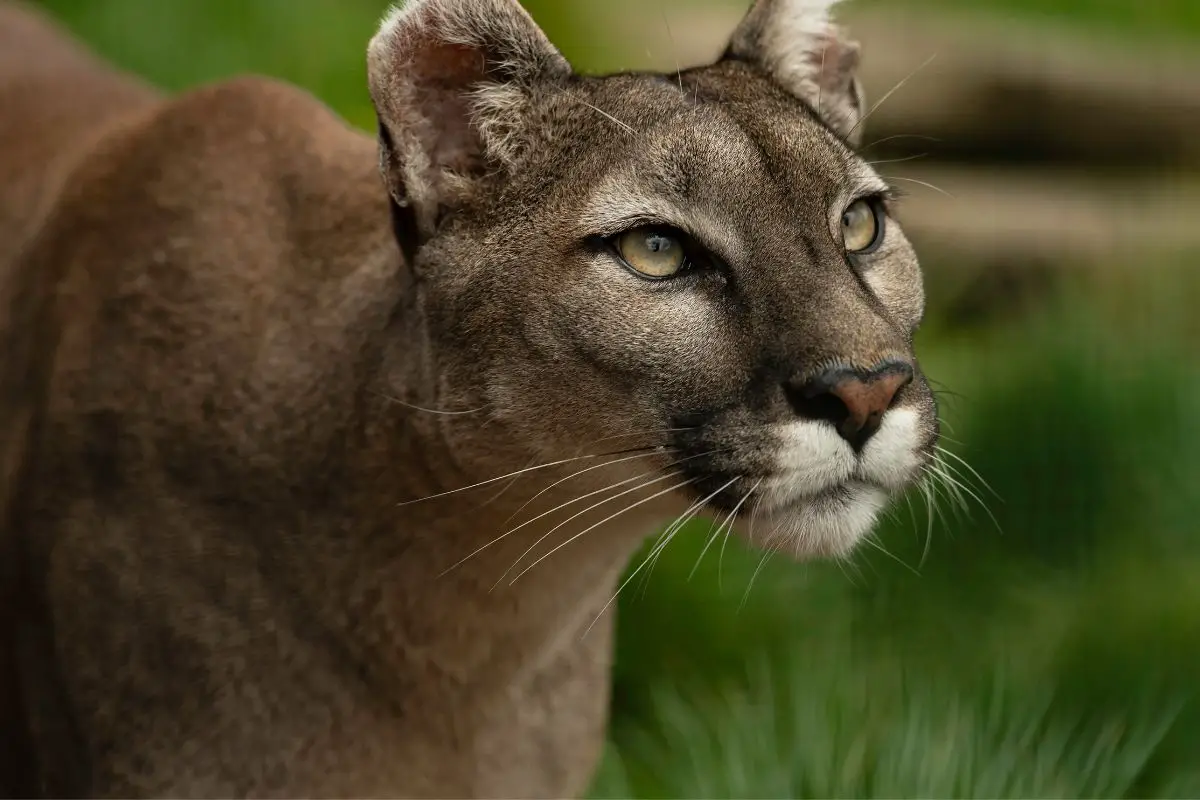
The pups will also huff, “hiccup”, and learn to bark. Just think of a Siberian Husky pup, and a wolf pup will be very similar!
Mountain Lion
Mountain lions can make a range of sounds, but they can’t roar like lions or tigers.
A mountain lion will growl and hiss, like a house cat, and they can also purr. Males and females are known for their “scream” that can often be heard in the wilderness.
This scream is loud and shrill, and resembles a woman’s scream very closely. In fact, the two are often mistaken for each other.
This scream is the most well-known sound of a cougar. This sound is something that you should always look out for if you are out.
For female cougars, this scream is thought to indicate that they are ready to mate and is done to signal that to males in the area.
If you hear something that sounds like a screaming woman in the wild, you should move in the opposite direction.
Cougar cubs can hiss and make chirping sounds. This chirping is thought to be a way of them locating their mother, and the mother will chirp back.
Family
Wolf
All wolves are part of the canidae family, which means that they are dogs.
Mountain Lion
The mountain lion is part of the Felidae family, meaning that it is a cat.
Habitats And Range
Wolf
Gray wolves can thrive in a diverse range of habitats. They can live in thick forests to deserts and even Arctic tundra.
These animals have a wide distribution, with subspecies of gray wolves being found in North America, Eurasia, and even Africa.
The famous gray wolf is primarily known for its presence in countries like the United States, Canada, and Russia.
In Canada, there are estimated to be around 60,000 gray wolves, 30-40,000 in Russia, and between 14-18,000 in the United States, with the majority located in Alaska.
Like most animals, wolves prefer to make their homes away from humans.
However, with their habitats constantly being destroyed, more wolves are being seen near cities and built-up areas.
Mountain Lion
Mountain lions cover an extreme range – all the way from Alaska to Argentina and even southern Chile.
Because of this, they can thrive in a variety of ecosystems as long as there is prey and shelter at their disposal.
It would not be unusual to see mountain lions anywhere from mountainous regions to deserts, forests, and wetlands.
No matter where they are, cougars typically prefer to stay away from humans and too much development.
There have been instances, however, where mountain lions are seen close to cities, or in city suburbs.
Social Behavior
Wolf
Wolves are pack animals. They are social, and live in social groups that have hierarchies.
Groups can be anywhere from two wolves to 15 or more.
These animals communicate a lot through things like body language, but also vocalizations and scent marking.
Gray wolf territories can vary greatly in size, depending on the prey available in the area.
Some packs only have territories up to 50 square miles, while others roam in 1,000 square miles.
Some numbers state that territories can be up to 3,000 square miles, though this would likely only be in more extreme cases.
Mountain Lion
Mountain Lions are solitary animals. This means that they live alone and have their own territories.
The only time that these animals don’t live alone is during the mating season and when the female is caring for her cubs.
When solitary, these animals need between 50 and 125 square miles to roam, with males preferring more space.
Diet
Wolf
Wolves, like other canine species, are primarily carnivores. However, they are not obligate carnivores, which means that they are technically omnivores.
This means that wolves can get the nutrients they need from meat from the animals they hunt, but also plant matter.
They hunt in packs, and will go after animals such as deer, elk, and even moose. However, they will also hunt smaller animals like birds and rabbits.
Mountain Lion
Mountain lions are obligate carnivores, like all other cats. This means that they can only get the nutrients they need from meat rather than vegetation.
This does not mean that they cannot eat other food types, but simply that they would not get the benefit of doing so except for the pleasure of it or the flavor.
Mountain Lions will typically hunt for things like deer or sheep, but will also eat smaller animals like mice and rabbits when available.
Breeding
Wolf
Most gray wolves will breed any time between January to March. However, for wolves who live further south, their breeding season is typically easier.
Wolves will be pregnant for roughly 63 days before giving birth to a litter in a private den away from the pack.
The average number of pups ranges from 4-6. Pups will typically be fully weaned by the time they are 8 weeks old.
At his point, the mother will relocate the pups to be with the rest of the pack.
Mountain Lion
Unlike many other animals, there is no set breeding or mating season for mountain lions.
Mating can happen at any time of year. However, the majority of mountain lion births take place in the late winter or early spring, but this is certainly not always the case. Females will breed every two years.
These animals have a gestation period of 90 to 96 days. When the mother is ready, she will typically give birth to anywhere between 1-5 cubs.
These cubs will then stay with her until they are ready to live on their own.
This is usually until they are around 15 months, or little over a year old.
However, some cubs will stay with their mother until they are over two years old before venturing off on their own.
Who Would Win In A Fight – A Wolf Or A Mountain Lion?
Between a lone wolf and a mountain lion, the mountain lion would undoubtedly win in a fight.
However, if a mountain lion came across a pack of wolves, the pack would come out on top.
Considering that wolves hunt in packs and frequently take down prey as large as moose, one mountain lion against a pack wouldn’t stand a chance.
Final Thoughts
The biggest difference between wolves and mountain lions is that wolves are canids (dogs), while pumas are felids (cats).
Mountain lions have retractable claws and live alone, while wolves do not, and live in packs.
There are a number of noticeable differences between these two species, but also similarities if you look close enough.
- Sink Your Teeth Into This: Analyzing the Powerful Lion Bite Force - September 8, 2023
- Siberian Tigers: Everything You Need To Know - September 4, 2023
- Do Lions Eat Humans? Understanding Lion Aggression and Risks - September 4, 2023

